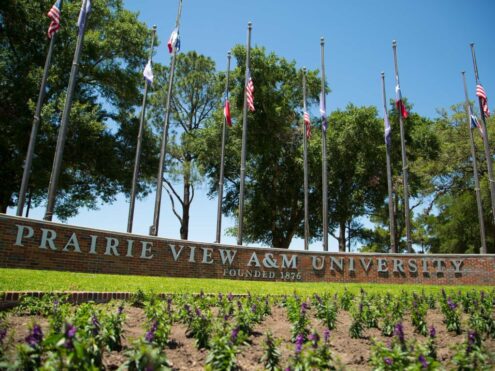Racial Segregation, Resource Hoarding, and the Erasure of Institutional History at HBCUs: A Case Study at PVAMU
Overview
This blog post examines how racial segregation and systemic resource hoarding have contributed to the erasure of institutional histories at Historically Black Colleges and Universities. We will use one of the most prestige historically black universities as our focus, other known as Prairie View A&M University. An important key factor to remember about the illustrious institution of PVAMU, is the academic programs that are set into place it explores the structural mechanisms that have limited archival development, hindered historical preservation, and marginalized the visibility of Black educational institutions in broader academic and public discourse.

A Deeper Insight
Historically, segregation did not simply manifest into physical separation; the psychological effects of race “separation “ rolled into the 2000’s after the raging influence of Jim Crow laws. While legal segregation ended in the mid-20th century, its structural legacy remains evident in educational disparities. HBCUs have faced chronic underfunding relative to predominantly white institutions often referred to as PWIs, a pattern often called resource hoarding. This unequal distribution has impaired archival development, preservation initiatives, and broader institutional documentation. As a result, the histories of HBCUs have frequently been omitted from public narratives and academic recognition. PVAMU’s experience illustrates this phenomenon. Founded in 1876, it remains one of the oldest public HBCUs in the United States. Yet its history is frequently omitted from state and national narratives. Public resources have favored PWIs, and initiatives to preserve PVAMU’s archival materials have historically lacked sustained support. These disparities reveal a broader pattern of institutional neglect that reflects the long-term consequences of racialized funding structures.Efforts to counteract this erasure have emerged through public history initiatives. Public history offers a corrective to this erasure. By prioritizing access, engagement, and collective memory, public history can function as a form of institutional and racial repair. At PVAMU, projects such as the Digital PV Panther Projectrepresent early steps toward this goal. Through digitization, oral history collection, and student-led archival work, such initiatives challenge the historical marginalization of HBCUs.
How are PVAMU Scholars holding their institution accountable?
Projects like the Digital PV Panther Project—funded by the National Endowment for the Humanities—represent an attempt to reclaim historical narratives through digital preservation, oral history collection, and student-led archival work. Such efforts serve not only to document PVAMU’s past but to actively resist the epistemic marginalization that segregation produced.
To achieve more substantive forms of racial desegregation, public history must extend beyond symbolic inclusion. It must prioritize equitable resource allocations , academic recognition, and the active mission of the Black institutional narrative. At PVAMU, this could include community-archival partnerships, interactive history installations, and curricular integration of institutional history.
Ultimately, this case highlights the ongoing impact of segregation on historical representation and the necessity of public history as a reparative tool. By reclaiming control over its narrative, PVAMU can challenge the structural forces that have obscured its legacy and affirm its place within the broader landscape of American higher education.
(note1):
Substantial NEH grant helping to eliminate silences, erasures surrounding history of PVAMU
(note2): vague resources from article listed below
Amy Earhart, “Can We Trust the University?: Digital Humanities Collaborations with Historically Exploited Cultural Communities,” in Bodies of Information:
Intersectional Feminism and the Digital Humanities, edited by Elizabeth Losh and Jacqueline Wernimont (University of Minnesota Press, 2018), 369-90.
https://doi.org/10.5749/j.ctv9hj9r9.23.